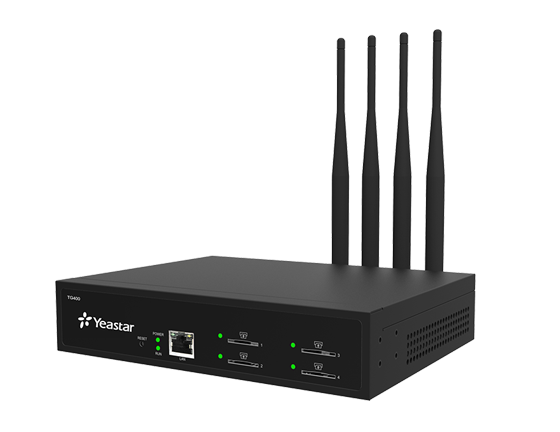
Understanding VOIP Gateways. How They Work and Their Integration with Cloud PBX
Share
In the world of modern telecommunications, Voice over Internet Protocol (VOIP) has become a cornerstone technology for businesses seeking efficient and cost-effective communication solutions. At the heart of many VOIP systems lies a crucial component known as a VOIP gateway. In this article, we'll delve into what exactly a VOIP gateway is, how it functions, the different types available (such as FXS, FXO, and GSM), and how they integrate with a cloud PBX.
What is a VOIP Gateway?
A VOIP gateway acts as a bridge between traditional telephony infrastructure and internet-based VOIP networks. It converts voice traffic from traditional analog or digital phone lines into data packets that can be transmitted over an IP network, and vice versa. This conversion enables seamless communication between VOIP networks and traditional phone systems.
How Does a VOIP Gateway Work?
VOIP gateways utilize various interfaces to connect with different types of telephony equipment. Here are some common types of VOIP gateways and their functionalities:
1. FXS Gateway: FXS (Foreign Exchange Station) gateways connect analog devices such as telephones, fax machines, or modems to a VOIP network. They provide the necessary voltage and signaling to power these devices and enable them to communicate over IP networks.
2. FXO Gateway: FXO (Foreign Exchange Office) gateways connect VOIP systems to traditional analog phone lines provided by a telecommunications service provider. They allow businesses to maintain connectivity with the public switched telephone network (PSTN) while utilizing VOIP technology for internal communication.
3. GSM Gateway: GSM gateways interface VOIP networks with cellular networks, enabling calls to and from mobile phones. These gateways are particularly useful for businesses with remote workers or those operating in areas with limited landline infrastructure.
Integration with Cloud PBX
Cloud PBX (Private Branch Exchange) is a virtual phone system hosted in the cloud that manages incoming and outgoing calls for an organization. VOIP gateways play a crucial role in integrating traditional telephony equipment with a cloud PBX. Here's how the integration typically works:
1. Connecting Analog Devices: FXS gateways are used to connect analog devices such as desk phones or fax machines to the cloud PBX. These gateways convert analog voice signals into digital data packets that can be transmitted over the internet to the cloud PBX provider.
2. Accessing External Phone Lines: FXO gateways enable the cloud PBX to connect with external phone lines provided by a telecommunications carrier. This allows businesses to make and receive calls to and from external parties using their cloud-based phone system.
3. Mobile Connectivity: GSM gateways provide a link between the cloud PBX and cellular networks, allowing employees to make and receive calls on their mobile devices using the organization's phone system.
By integrating VOIP gateways with a cloud PBX, businesses can enjoy the benefits of modern communication technology while still leveraging their existing telephony infrastructure. This integration facilitates seamless communication both within the organization and with external parties, enhancing productivity and efficiency.
In conclusion, VOIP gateways play a pivotal role in enabling the convergence of traditional telephony and internet-based communication technologies. Whether it's connecting analog devices, accessing external phone lines, or integrating mobile connectivity, VOIP gateways are essential components in modern telecommunication systems, particularly when integrated with cloud PBX solutions.
